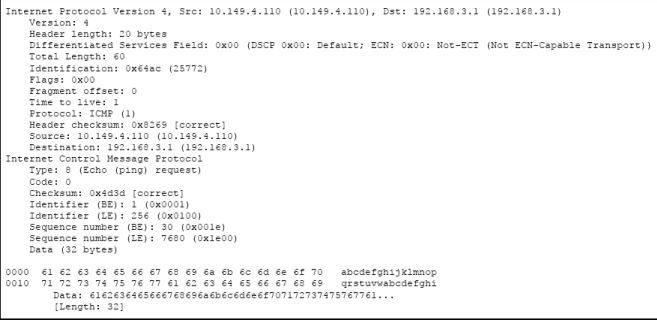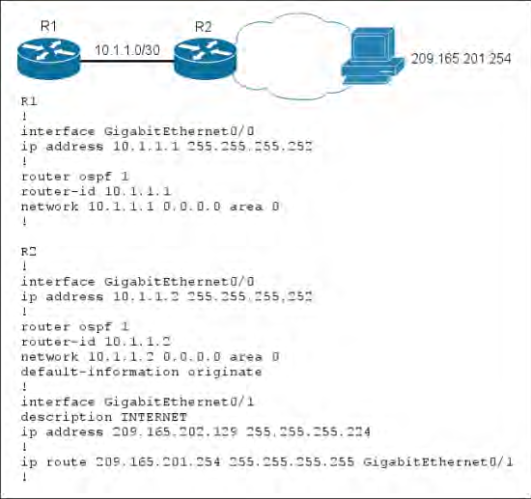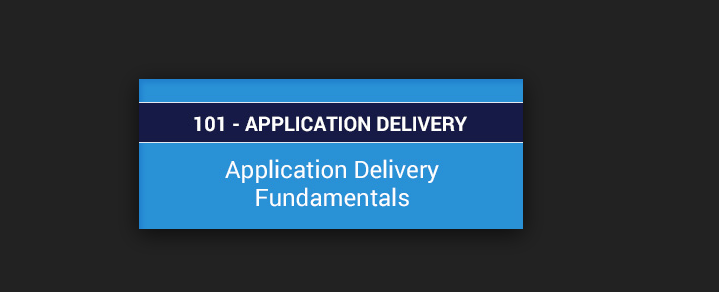I’ve recently been on a 1 day training course covering the F5 101v2 – Application Delivery Fundamentals exam (blueprint here), and thought I would share my study notes. I’m taking the multiple choice exam this week, so hopefully the process of going through the study guide, and summarising everything will have given me enough knowledge to pass!
After passing the 101 exam, I will be going on to study for the 201 exam (TMOS Administration), which I have been told requires quite a bit more effort. I plan to upload my study notes for the 101 dumps as well when they are complete.
These notes are mostly structured around the objectives in the blueprint document, and the content/exam is based on F5 BIG-IP v11.4.Here’s a quick glossary of F5 terminology, in case you’re missing some of it:
F5 Study Materials: 101 Application Delivery Fundamentals and Others:
- Getting Started with F5 Products
- What’s New
- LTM Essentials
- Data Solutions
- FirePass Essentials
- Technology Overviews
- The guide is complied in a simpler language, which is easy to understand.
- This covers all the topics of the F5 101- Application Delivery Fundamentals exam in very logical way.
- Exam Information:https://www.pass4itsure.com/101.html

Topic 1, Network Principles
Refer to the exhibit

ICMP Echo requests from host A are not reaching the intended destination on host B. What
is the problem?
A. The ICMP payload is malformed.
B. The ICMP Identifier (BE) is invalid.
C. The negotiation of the connection failed.
D. The packet is dropped at the next hop.
E. The link is congested.
Answer: D
Explanation:
Here we see that the Time to Live (TTL) value of the packet is one, so it will be forwarded
to the next hop router, but then dropped because the TTL value will be 0 at the next hop.
101 exam Question No : 2 – (Topic 1)
What is the cause of ignores and overruns on an interface, when the overall traffic rate of
the interface is low?
A. a hardware failure of the interface
B. a software bug
C. a bad cable
D. microbursts of traffic
Answer: D
Explanation:
Micro-bursting is a phenomenon where rapid bursts of data packets are sent in quick
succession, leading to periods of full line-rate transmission that can overflow packet buffers
of the network stack, both in network endpoints and routers and switches inside the
network
Symptoms of micro bursts will manifest in the form of ignores and/ or overruns (also shown
as accumulated in “input error” counter within show interface output). This is indicative of
receive ring and corresponding packet buffer being overwhelmed due to data bursts
coming in over extremely short period of time (microseconds). You will never see a
sustained data traffic within show interface’s “input rate” counter as they are averaging bits
per second (bps) over 5 minutes by default (way too long to account for microbursts). You
can understand microbursts from a scenario where a 3-lane highway merging into a single
lane at rush hour – the capacity burst cannot exceed the total available bandwidth (i.e.
single lane), but it can saturate it for a period of time.
101 exam Question No : 3 DRAG DROP – (Topic 1)
Drag and drop the extended ping command field on the left to its usage on the right.

Answer:

101 exam Question No : 4 – (Topic 1)
Refer to the exhibit.

Which statement about the output is true?
A. The flow is an HTTPS connection to the router, which is initiated by 144.254.10.206.
B. The flow is an HTTP connection to the router, which is initiated by 144.254.10.206.
C. The flow is an HTTPS connection that is initiated by the router and that goes to
144.254.10.206.
D. The flow is an HTTP connection that is initiated by the router and that goes to
144.254.10.206.
Answer: A
Explanation:
We can see that the connection is initiated by the Source IP address shown as
144.254.10.206. We also see that the destination protocol (DstP) shows 01BB, which is in
hex and translates to 443 in decimal. SSL/HTTPS uses port 443.
101 exam Quetstion No : 5 – (Topic 1)
Refer to the exhibit

Routers R1 and R2 are configured as shown, and traffic from R1 fails to reach host
209.165.201.254.
Which action can you take to correct the problem?
A. Ensure that R2 has a default route in its routing table.
B. Change the OSPF area type on R1 and R2.
C. Edit the router configurations so that address 209.165.201.254 is a routable address.
D. Remove the default-information originate command from the OSPF configuration of R2.
Answer: A
Explanation:
Not sure that any of these answers are correct, it appears that this configuration is valid for
reaching that one specific host IP. Answer A does have a route to that host so it would not
need a default route to get to it. Choice B is incorrect as the area types have nothing to do
with this. C is incorrect as that IP address is routable, and D is needed so that R1 will have
a default route advertised to it from R2 so that it can reach this destination.
101 exam Question No : 6 – (Topic 1)
Which statement describes the purpose of the Payload Type field in the RTP header?
A. It identifies the signaling protocol.
B. It identifies the codec.
C. It identifies the port numbers for RTP.
D. It identifies the port numbers for RTCP.
Answer: B
Explanation:
PT, Payload Type. 7 bits: Identifies the format of the RTP payload and determines its
interpretation by the application. A profile specifies a default static mapping of payload type
codes to payload formats. Additional payload type codes may be defined dynamically
through non-RTP means. An RTP sender emits a single RTP payload type at any given
time; this field is not intended for multiplexing separate media streams. A full list of codecs
and their payload type values can be found at the link below:
101 exam Question No : 7 – (Topic 1)
How many hash buckets does Cisco Express Forwarding use for load balancing?
A. 8
B. 16
C. 24
D. 32
Answer: B
Explanation:
In order to understand how the load balance takes place, you must first see how the tables
relate. The Cisco Express Forwarding table points to 16 hash buckets (load share table),
which point to the adjacency table for parallel paths. Each packet to be switched is broken
up into the source and destination address pair and checked against the loadshare table.
101 exam Question No : 8 – (Topic 1)
Which statement is true regarding the UDP checksum?
A. It is used for congestion control.
B. It cannot be all zeros.
C. It is used by some Internet worms to hide their propagation.
D. It is computed based on the IP pseudo-header.
Answer: D
Explanation:
The method used to compute the checksum is defined in RFC 768:
“Checksum is the 16-bit one’s complement of the one’s complement sum of a pseudo
header of information from the IP header, the UDP header, and the data, padded with zero
octets at the end (if necessary) to make a multiple of two octets.”
In other words, all 16-bit words are summed using one’s complement arithmetic. Add the
16-bit values up. Each time a carry-out (17th bit) is produced, swing that bit around and
add it back into the least significant bit. The sum is then one’s complemented to yield the
value of the UDP checksum field.
If the checksum calculation results in the value zero (all 16 bits 0) it should be sent as the
one’s complement (all 1s).
101 exam Question No : 9 – (Topic 1)
Which two Cisco Express Forwarding tables are located in the data plane? (Choose two.)
A. the forwarding information base
B. the label forwarding information base
C. the IP routing table
D. the label information table
E. the adjacency table
Answer: A,B
Explanation:
The control plane runs protocols such as OSPF, BGP, STP, LDP. These protocols are
needed so that routers and switches know how to forward packets and frames.
The data plane is where the actual forwarding takes place. The data plane is populated
based on the protocols running in the control plane. The Forwarding Information Base (FIB)
is used for IP traffic and the Label FIB is used for MPLS.

F5 Certifications – F5 Certified Administrator
The 101 exam is an entry path and a must exam towards 201 exam. By passing F5 101 pdf and 201 exams one can be certified as F5 BIG-IP Administrator.The F5 101- Application Delivery Fundamentals exam is easy to pass provided you read this book page to page and do have good understanding of basic networking concepts like OSI layers, TCP/IP, TCP dumps, basic F5 terminologies and concepts.
The second good source is the 101 vce University where you can access F5 virtual resources and practice what you learn. The training catalog offers following free courses which one can make use of to pass F5 Certification exams.I believe Pass4itsure wrote this purely to empower 101 exam certification aspires, I really like the way how he penned down the concepts in a concise way, the flow keeps you engaged and some one with good reading skills can finish this book in a weeks time.
For More Exam Information – visit Pass4itsure google drive:https://drive.google.com/file/d/0BwxjZr-ZDwwWenFGZTVuV01VSEk/view?usp=drive_web
For More Details: http://www.microsoft-technet.com/hands-on-youtube-study-guide-for-exam-70-411-vce.html